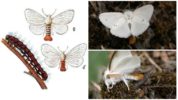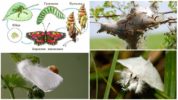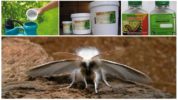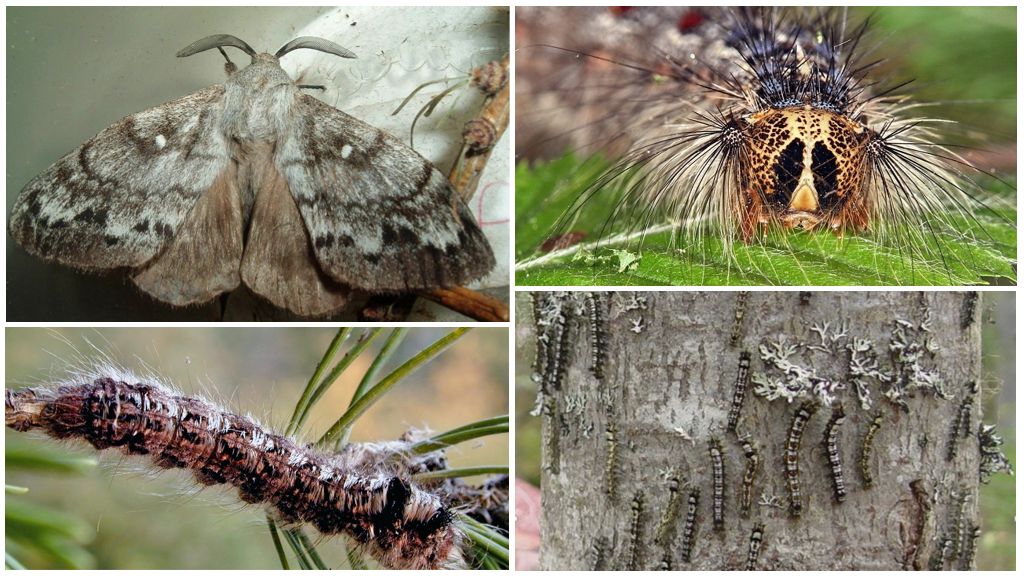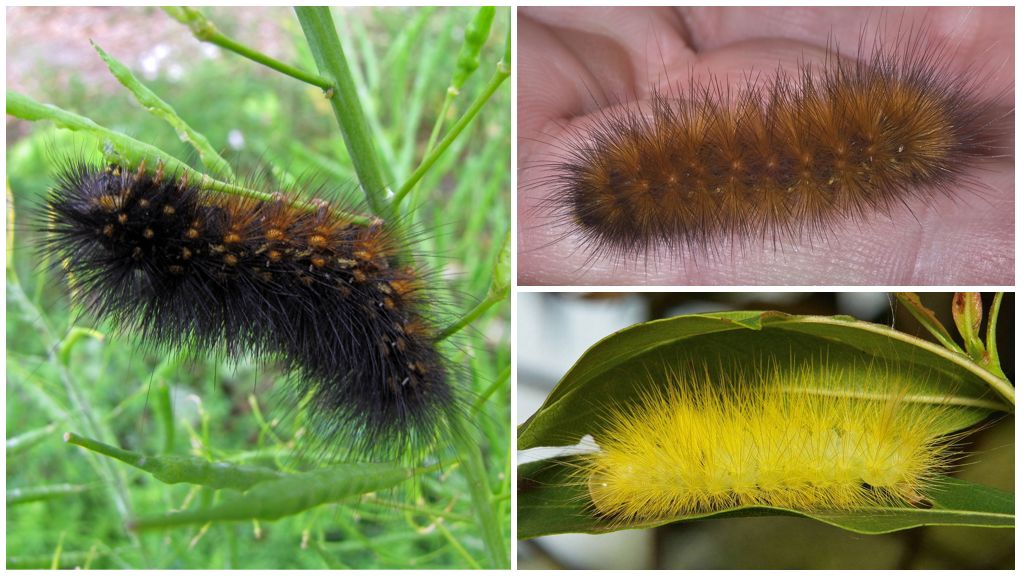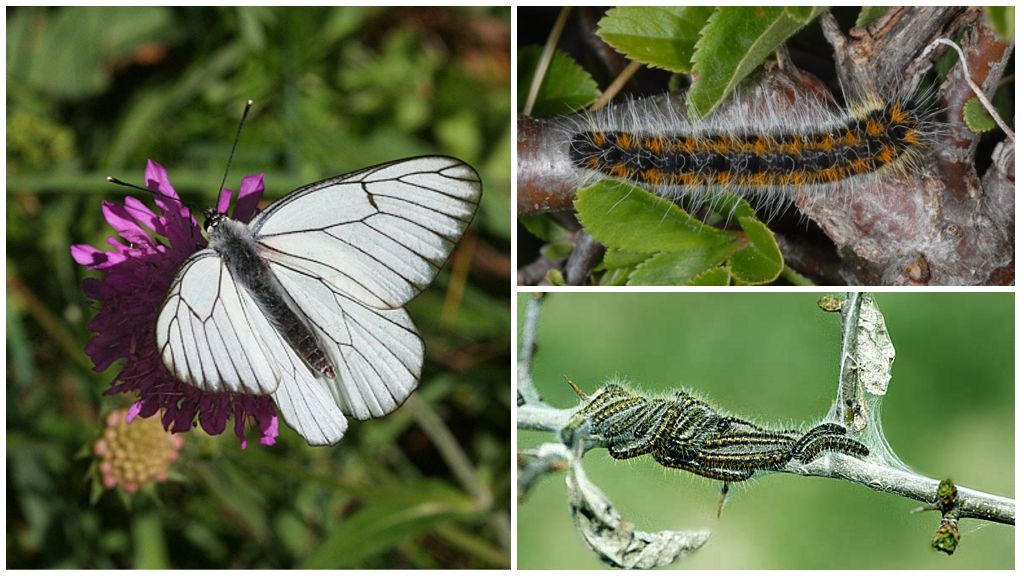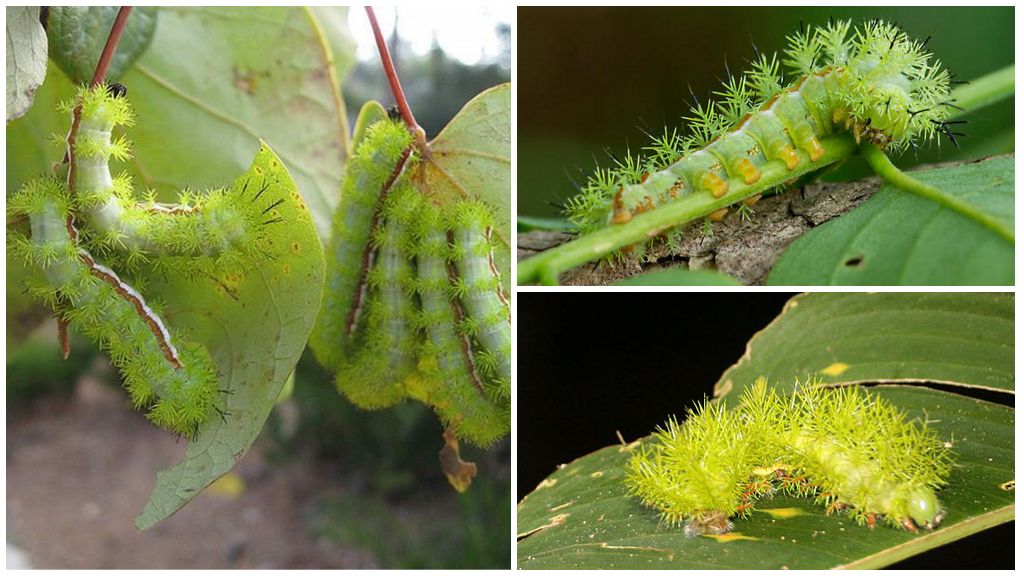- Goldfish
- Butterfly breeding
- Goldfighting Methods
Goldfish is a representative of a large family of silkworms (Liparidae). This is an unusual butterfly, which has a wide distribution area and is familiar to many summer residents, gardeners. It is very easy to identify a pest by external signs. After detection at the site should be taken immediately silkworm control measures.
Who is a goldfish
Goldfish is a snow-white butterfly; on the abdomen there are golden-colored villi. It is thanks to them that the insect got its name. The whole body of the moth is covered with long fibers of a light color.
On a note!
You can meet a goldfish in the summer until July. It is during this period that individuals reach the adult stage and prepare for mating. They hibernate in the buds of trees, thereby destroying them.
In the photo of a goldfish, you can clearly determine the gender of the individual. The female is somewhat lighter and has a larger abdomen. Males are smaller, neater, but with wider antennae.
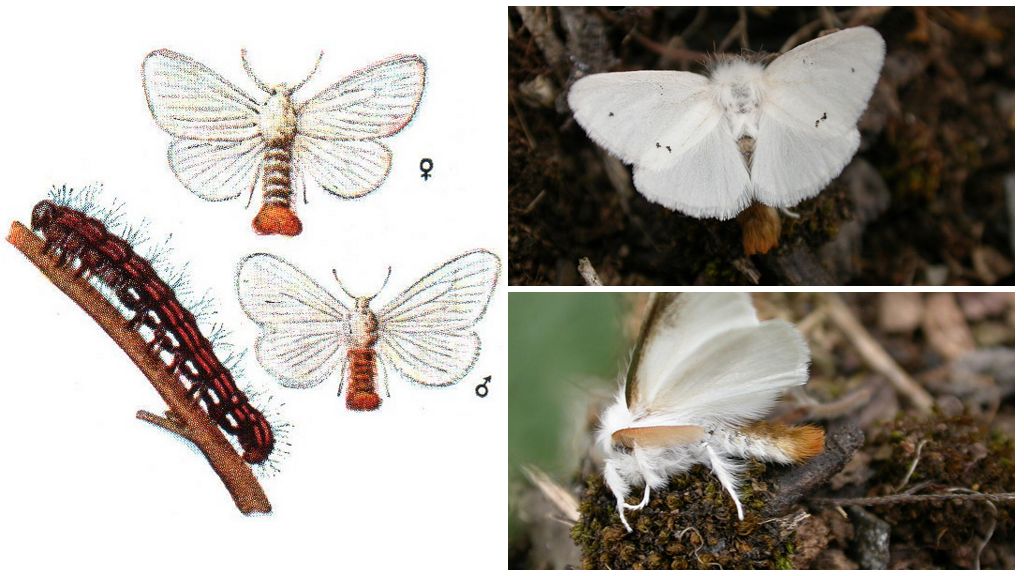
Developmental stages
Adult females lay eggs on the inner surface of the foliage, so they are easy to detect. Outwardly, the masonry resembles golden pillows with a diameter of 6-8 cm. It takes about 10 days to mature. After that, larvae are shown from the eggs.
Important!
Of particular danger is the caterpillar of the goldfish. Her body 3-4 cm long is completely covered with small villi. Touching them may leave burns on the victim’s body. It is highly undesirable to get into the respiratory tract. People suffering from allergic reactions, meeting with an insect can bring a lot of trouble and even pose a serious health hazard.
In the larval stage, the goldfish is about a month, after which it develops into a chrysalis. To create a cocoon, she chooses not only the leaves of the trees, but also the gaps between the bark, branching branches. The color of the pupa is black or brown.
After 2-3 weeks the chrysalis turns into an adult. Wingspan 30-35 mm. The butterfly leads a nocturnal lifestyle. This is her people who often observe in the summertime near lamps and street lamps. Moths years fall at the end of June-mid-July. This insect needs warm weather. After laying, the females die.
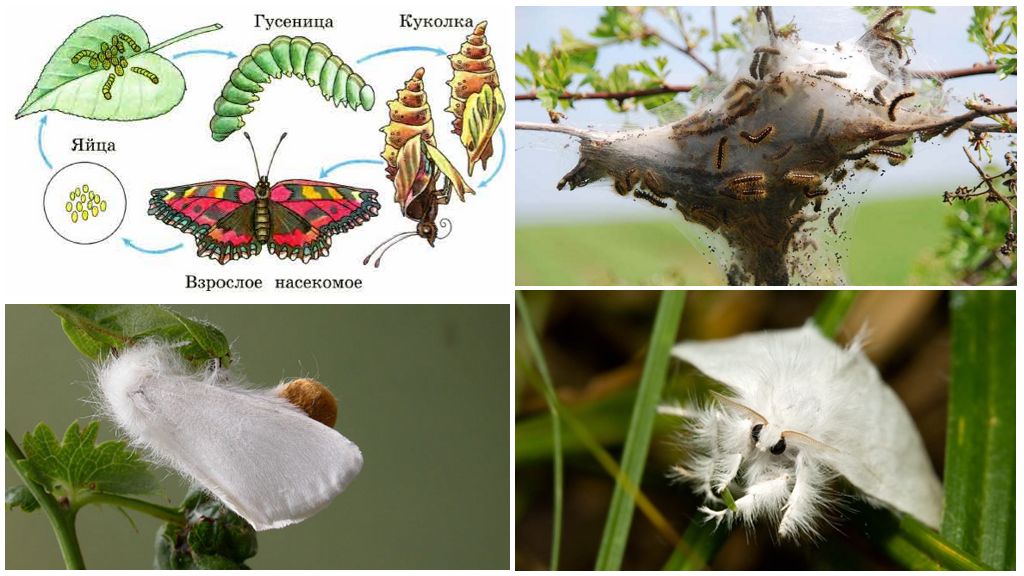
Caterpillar feeding and harm associated with it
Goldfish caterpillar is very gluttonous. Like her relative - unpaired silkworm, it can cause serious damage to the entire household. The harm begins even from the stage of the pupa, when it gnaws unblown kidneys. After the caterpillar reaches the adult stage, it switches to foliage. On young trees, a goldfish can completely destroy young leaves. As a result, the entire crop will die.
Important!
Favorite crops are apple trees, pears, apricots, oaks, thorns, white acacia and others.
The diet of the insect is quite extensive. Future butterflies actively eat foliage of fruit trees, shrubs and park crops. The vital activity of the caterpillar contributes not only to the negative impact on the aesthetic side of plants, but can also lead to their complete death. Caterpillars are poisonous.
How to deal with it
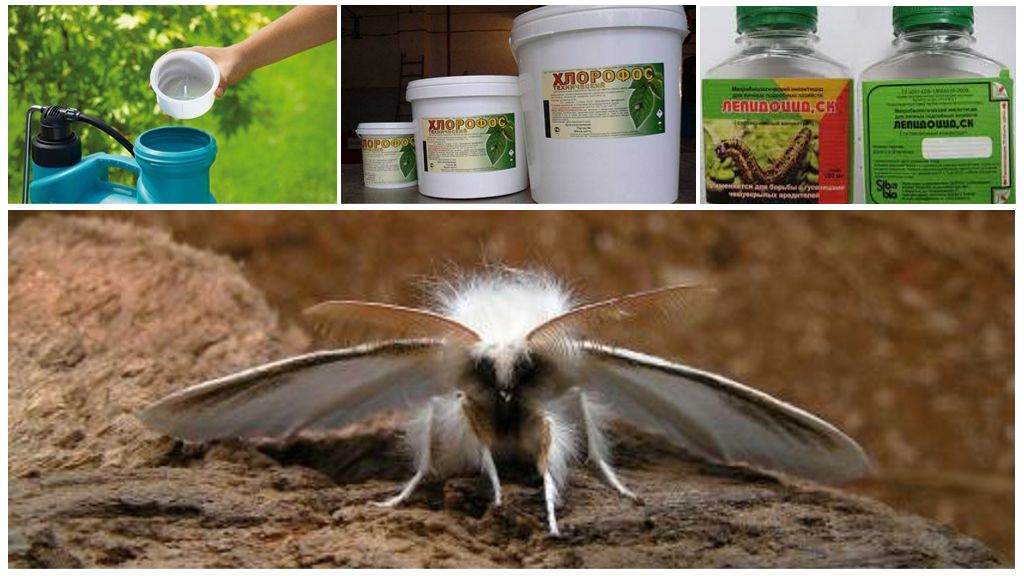
Every year, owners of land in many regions are forced to fight this insect.You need to start before the first leaf blooms. The best time is the end of autumn or the beginning of spring. Mechanical methods will help remove damaged leaves. To do this, bushes and trees are carefully inspected for infection and the affected areas are cut with delimbers.
In the warm season, when violent flowering of vegetation is observed, the use of chemicals is allowed. The most commonly used are Chlorophos, Metaphos, Entobacterin, Phosphamide. It is better to give preference to biologically based products. Lepidocide Herold, Dimilin, Bitoxibacillin and others are effective. Light traps and pheromone traps are also used.
A significant role in the regulation of the goldfish population is played by its natural enemies. Also, the caterpillar is susceptible to diseases of a viral and bacteriological nature. These factors make it possible to restrain the growth of the number of pests and prevent their uncontrolled development.
